In the dynamic world of business communication, grasping the nuances between meeting notes and minutes is not just beneficial, but essential. This comprehensive guide will take you on a journey through these two integral elements of effective meetings, exploring their unique characteristics, their distinct roles in facilitating communication, and how they contribute to overall organizational efficiency. By understanding these differences, you can better manage your meetings and ensure that every important detail is captured accurately and effectively.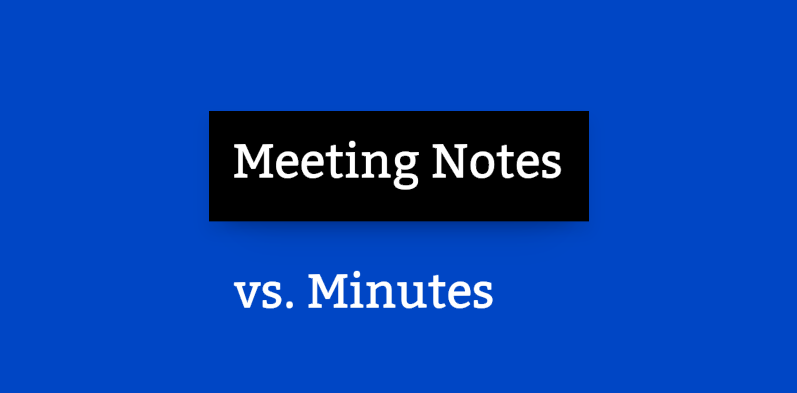
Part 1. What Are Meeting Notes?
Meeting notes are written or typed records that capture key information, discussions, decisions, and action items during a meeting. They serve as a valuable reference and documentation of what transpired during the meeting, ensuring that participants have a clear understanding of the topics covered and the outcomes achieved.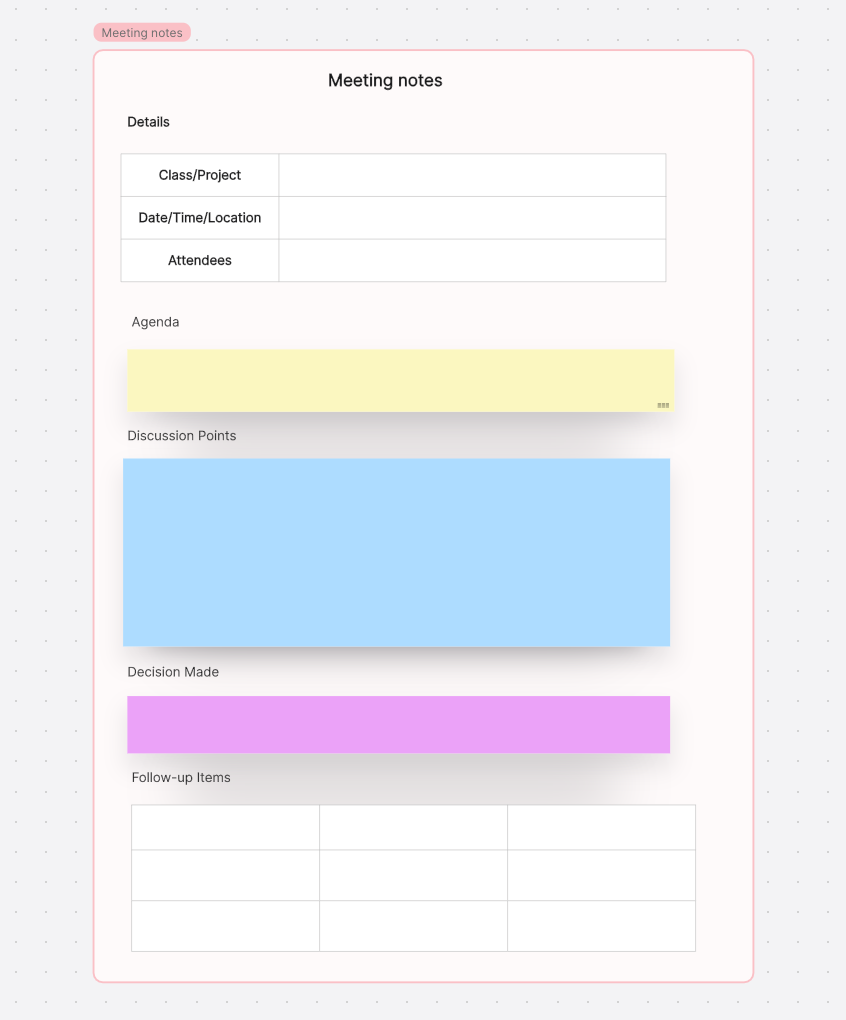
Key elements typically included in meeting notes are:
Meeting Details: Date and time of the meeting; Location or platform (if it's a virtual meeting).
Attendees: List of participants, including their names and roles.
Agenda: An outline of the topics or agenda items to be discussed during the meeting.
Discussion Points: Detailed notes on the discussions held during the meeting; Important points raised by participants.
Decisions Made: Clearly documented decisions that were reached during the meeting.
Action Items: Specific tasks or actions assigned to individuals or teams, including deadlines.
Follow-Up Items: Any unresolved issues or topics that require further attention or discussion.
Additional Notes: Any other relevant information, comments, or insights discussed during the meeting.
Meeting notes play a crucial role in maintaining transparency, accountability, and continuity in a work environment. They help keep everyone on the same page, provide a record of agreements and decisions, and serve as a resource for individuals who may have been unable to attend the meeting. Additionally, meeting notes can be referenced in the future to track progress on action items and to review the history of discussions and decisions.
Part 2. What Are Meeting Minutes?
Meeting minutes are a formal and detailed written record of what transpired during a meeting. They capture the essential information, discussions, decisions, and actions in a concise and organized format. Meeting minutes are typically more formal than basic meeting notes and are often required for official and regulatory purposes.
Here are key elements commonly found in meeting minutes:
- Header: Date and time of the meeting; Meeting location or platform; Name of the organization or group conducting the meeting.
- Attendance: List of attendees, including their names and titles or roles; Noting if anyone is absent or joined the meeting late.
- Approval of Previous Minutes: If applicable, a section for reviewing and approving the minutes from the previous meeting.
- Agenda Review: A summary of the agenda items discussed during the meeting.
- Discussion Points: Detailed notes on the discussions, including key points raised by participants.
- Decisions Made: Clearly documented decisions and resolutions reached during the meeting.
- Action Items: Specific tasks or action items assigned to individuals or teams, along with deadlines.
- Motions and Voting Results: Record of any formal motions proposed, and the outcomes of any votes taken.
- Unfinished Business: Any unresolved issues or topics carried over from previous meetings.
- Announcements: Important announcements or updates shared during the meeting.
- Next Meeting Date and Agenda: Information about the date, time, and agenda for the next meeting.
Meeting minutes serve as an official record of the proceedings, providing a historical account of discussions and decisions. They are particularly important for organizations, boards, and committees as they may be legally required and can be referenced in the future for continuity, accountability, and compliance purposes. Well-prepared meeting minutes help ensure that there is a clear and accurate record of what occurred during meetings, even for individuals who were not present.
Part 3. What Is the Difference Between Minutes and Notes of a Meeting?
The main differences between meeting minutes and meeting notes lie in their formality, level of detail, and intended use. Here's a breakdown of the distinctions:
Meeting Minutes:
- Formality: Minutes are more formal and structured compared to meeting notes. They often follow a specific format and are considered an official record.
- Detail: Minutes are more detailed and comprehensive. They provide a thorough account of discussions, decisions, and actions taken during the meeting.
- Legal and Official Use: Minutes are often considered legal documents and may be required for official and regulatory purposes. They serve as a formal record of organizational decisions.
- Approval Process: Minutes may go through an approval process during the subsequent meeting, where attendees review and approve the accuracy of the recorded information.
- Audience: Minutes are typically intended for a broader audience, including stakeholders, regulatory bodies, and individuals who were not present at the meeting.
- Structured Sections: Minutes follow a structured template that includes specific sections such as attendance, approval of previous minutes, discussion points, decisions, action items, and more.
Meeting Notes:
- Informality: Meeting notes are generally less formal. They may be taken in a more casual manner and can be flexible in terms of structure.
- Level of Detail: Meeting notes are less detailed compared to minutes. They capture key points, important discussions, and action items but may not include every nuance of the conversation.
- Use: Meeting notes are often used for personal reference or within a team setting. They help participants recall key information and serve as a quick summary of the meeting.
- No Formal Approval: Unlike minutes, meeting notes may not go through a formal approval process. They are often considered a personal or internal record rather than an official document.
- Audience: Meeting notes are primarily intended for internal use by the team or individuals who participated in the meeting. They may not be shared broadly with external parties.
- Flexibility: Meeting notes can be more flexible in terms of format and style. They can take the form of bulleted lists, free-form paragraphs, or any other format that suits the note-taker's preference.
In summary, meeting minutes are formal, detailed, and often serve legal and official purposes. They follow a specific structure and are approved by attendees. On the other hand, meeting notes are more informal, less detailed, and primarily serve as a personal or internal record for quick reference by the participants. The choice between minutes and notes depends on the context, the formality required, and the intended audience for the documentation.
Part 4. How to Take Meeting Notes or Meeting Minutes with Boardmix
Boardmix, a groundbreaking online whiteboard tool, revolutionizes the way teams collaborate. It's not just about sharing ideas or brainstorming sessions; it's about transforming the entire process of communication and teamwork. With Boardmix, you can take effective meeting notes or minutes seamlessly. Its intuitive design and user-friendly interface make it easy to capture key points, assign tasks, and track progress in real-time. Whether you're conducting a small team meeting or coordinating a large-scale project, Boardmix is designed to streamline your workflow and enhance productivity.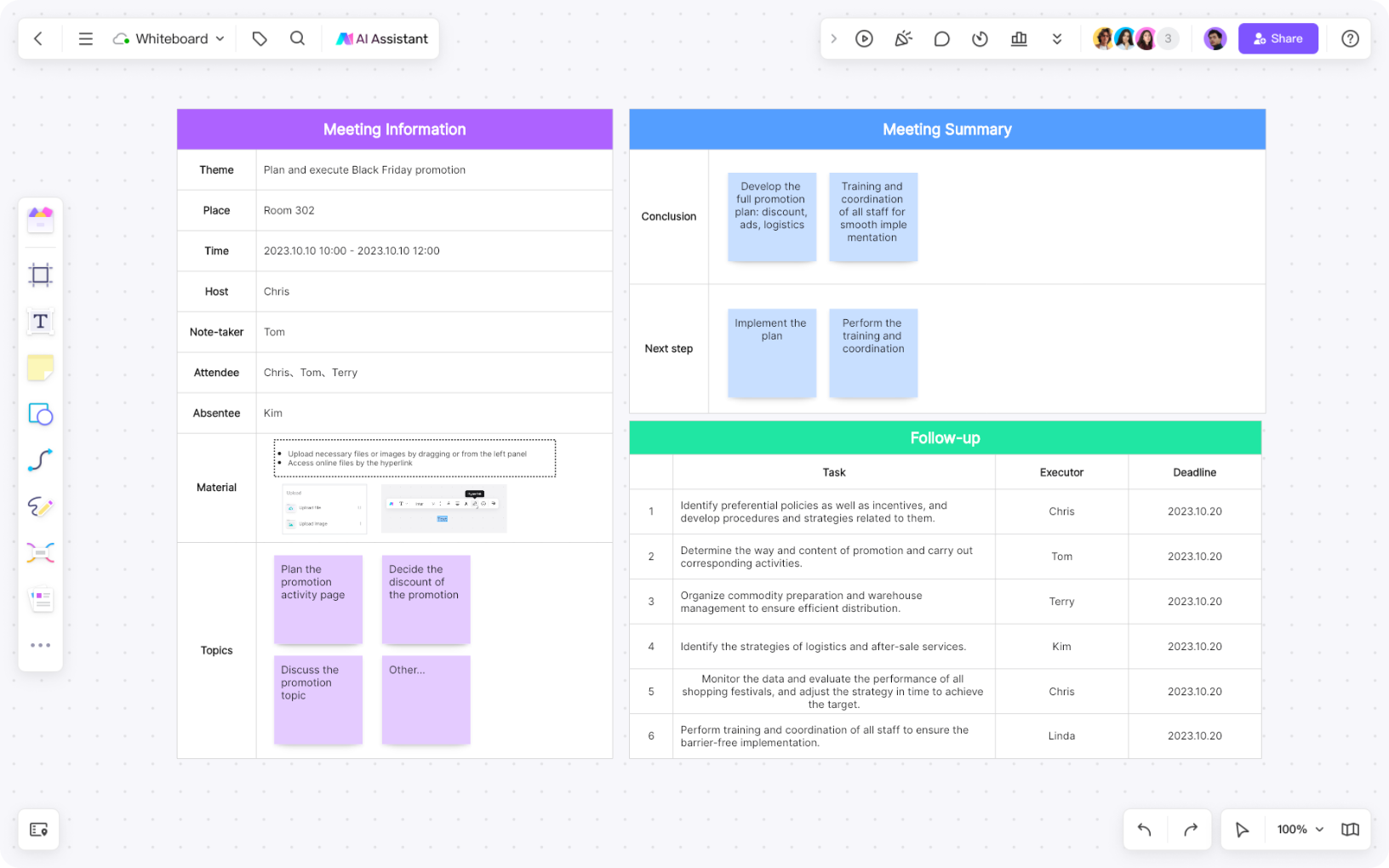
Key features of Boardmix include:
- Variety of templates for different types of meetings
- Real-time collaboration allowing multiple users to contribute simultaneously
- Easy sharing options for wider dissemination
- Advanced annotation tools for highlighting key points or ideas
- Integrated task management feature for assigning and tracking tasks directly within the platform
Here's how you can use Boardmix:
- Sign up or login to Boardmix.
- Choose a template that suits your needs or create new board.
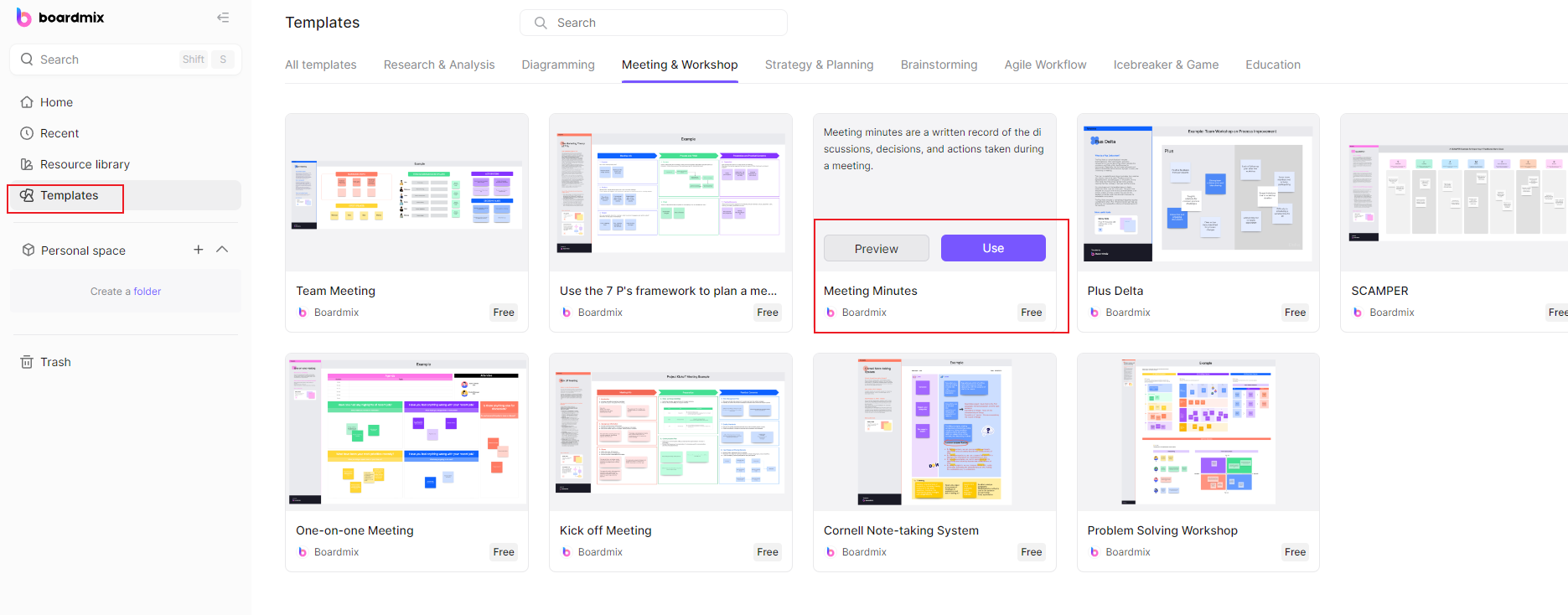
- Use text tools to jot down key points or decisions made during discussions. Assign tasks directly from within the platform.
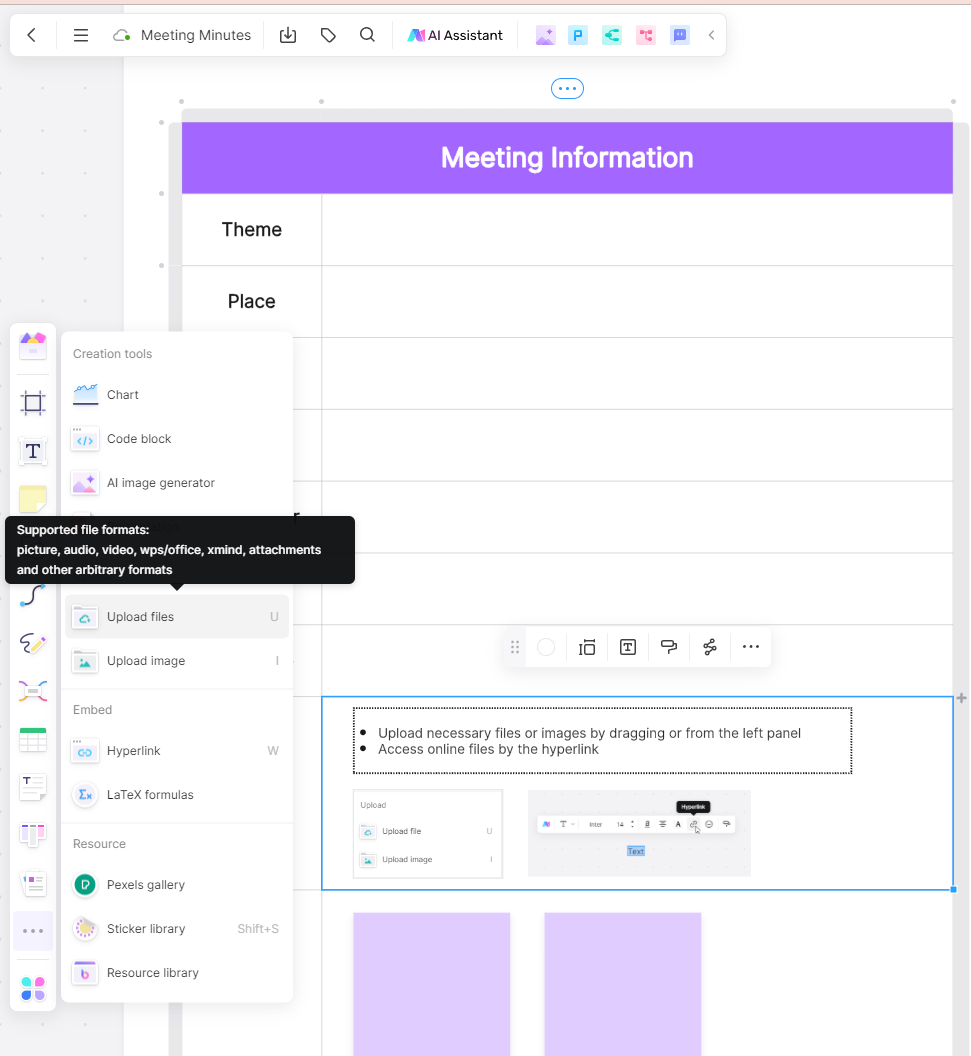
- Invite team members to join your board.

Conclusion
Comprehending the distinction between meeting notes and minutes is more than just understanding two different terms - it's about mastering a crucial aspect of effective business communication. This knowledge empowers you to accurately document the key outcomes of your meetings, ensuring nothing important slips through the cracks. With innovative tools like Boardmix, this process becomes not just simpler, but also more efficient. The platform's intuitive design and powerful features make capturing these critical details a breeze, thereby enhancing the productivity of your meetings. So, instead of spending excessive time on note-taking or minute-writing post-meeting, you can focus on what truly matters - driving action and results for your organization!








